Setting up the Grab/Release System
Setting up the SenseGlove Grab/Release System involves two main steps. The first step, configuring the virtual hand meshes for both real and virtual hands, is handled automatically by the plugin. The second step, which is also straightforward, involves setting up any existing actor in the Unreal Blueprint Editor that you want to respond to with haptic feedback when your SenseGlove device comes into contact with it:
-
Open any existing actor in the Unreal Blueprint Editor that you would like to respond to with haptic feedback when your SenseGlove device comes into contact with it.
-
In the
Componentspanel, click the+ Addbutton, then typeSGGrabinto theSearch Componentsinput field. Once found, click onSGGrabto add it to the current actor. You can rename theSGGrabcomponent to your desired name.
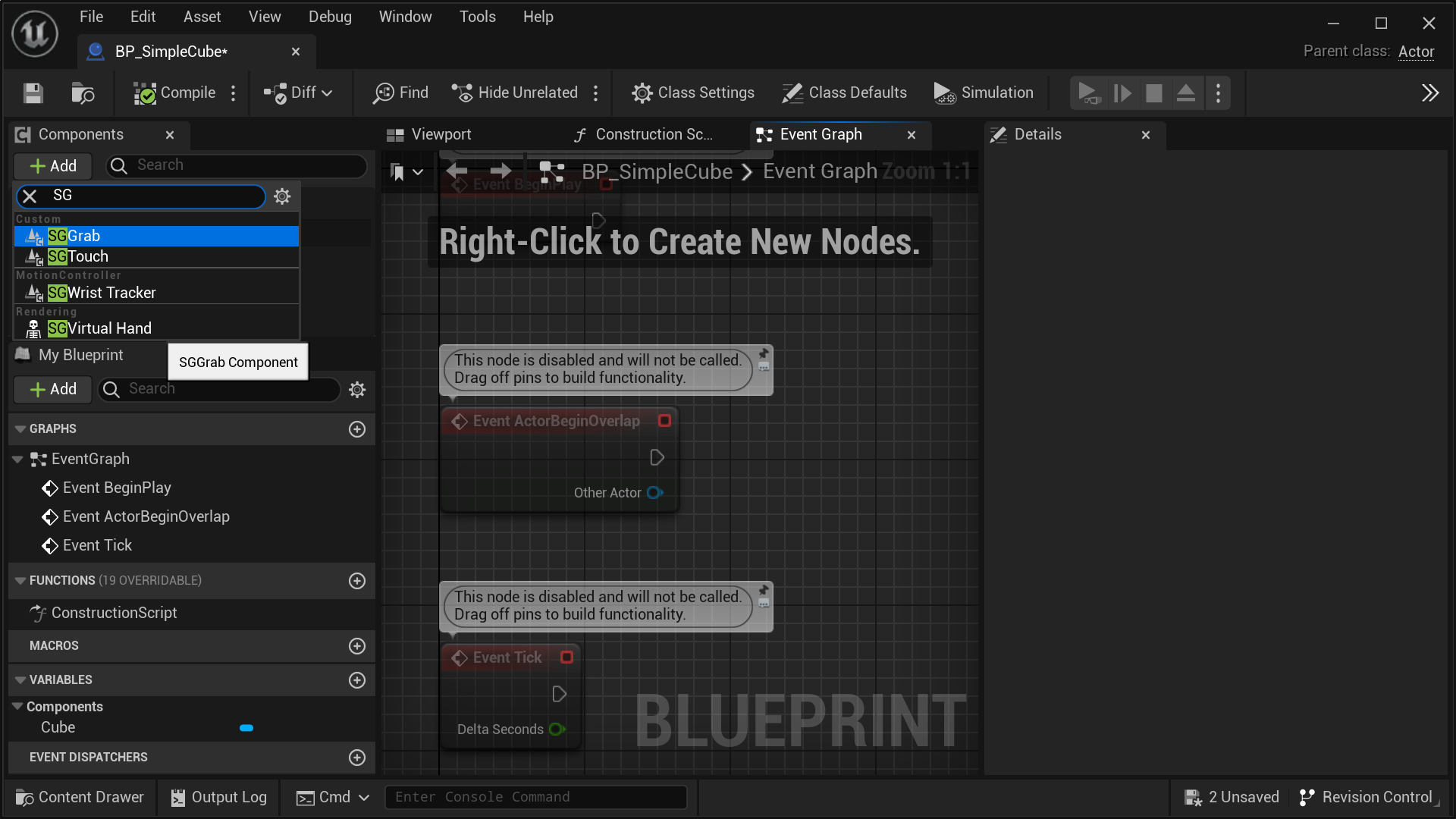
- With the
SGGrabcomponent selected in theComponentspanel, navigate to theDetailspanel. Under theSenseGlovesection, adjust the settings for the grab/release system to suit your needs.
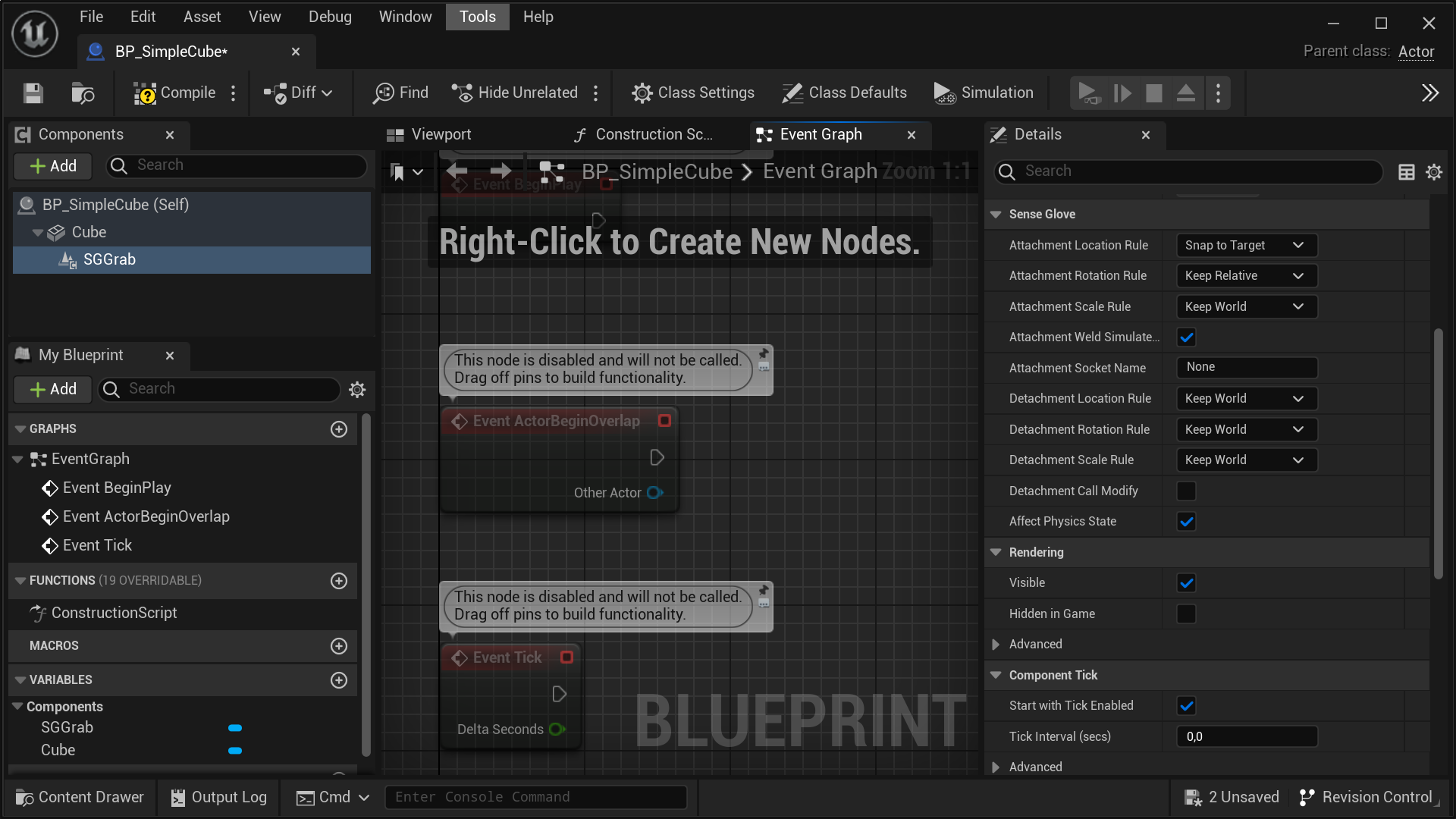
note
Any property prefixed with Attachment is a parameter directly passed to
Unreal's FAttachmentTransformRules during the grab process, while any
property prefixed with Detachment is a parameter directly passed to
Unreal's FDetachmentTransformRules during the release process.
caution
If AttachmentSocketName is unspecified, or incorrect the grabbable object
will be attached to the root bone of the virtual hand mesh, which probably is
not ideal.
- A key setting for the release system is located within your
SGPawninstance. In theDetailspanel for yourSGPawn, find theMax Number of Hand Velocity Samplessetting and adjust it according to your needs. This setting determines the velocity of objects released from the hands by averaging the specified number of frames. Optimizing this value depends on the framerate of your simulation at runtime.
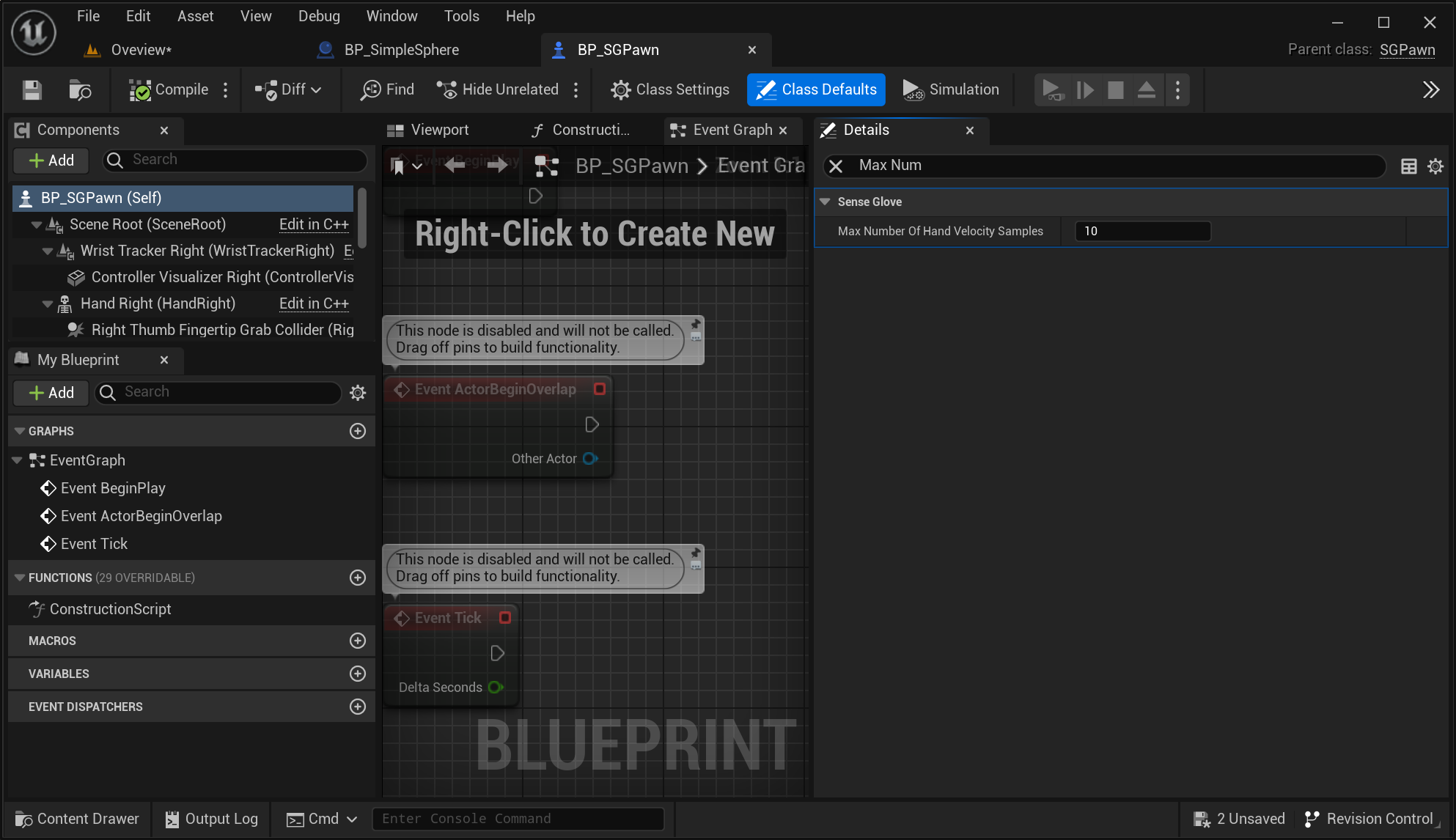
- One last aspect of the grabbable actors to take into account for the grab system to function properly is the collision settings of their mesh components. If you'd like to prevent the virtual hand meshes from passing through a grabbable actor, it's necessary to set the
Collision PresetstoBlock Allinside theDetailspanel for the actor's mesh components.
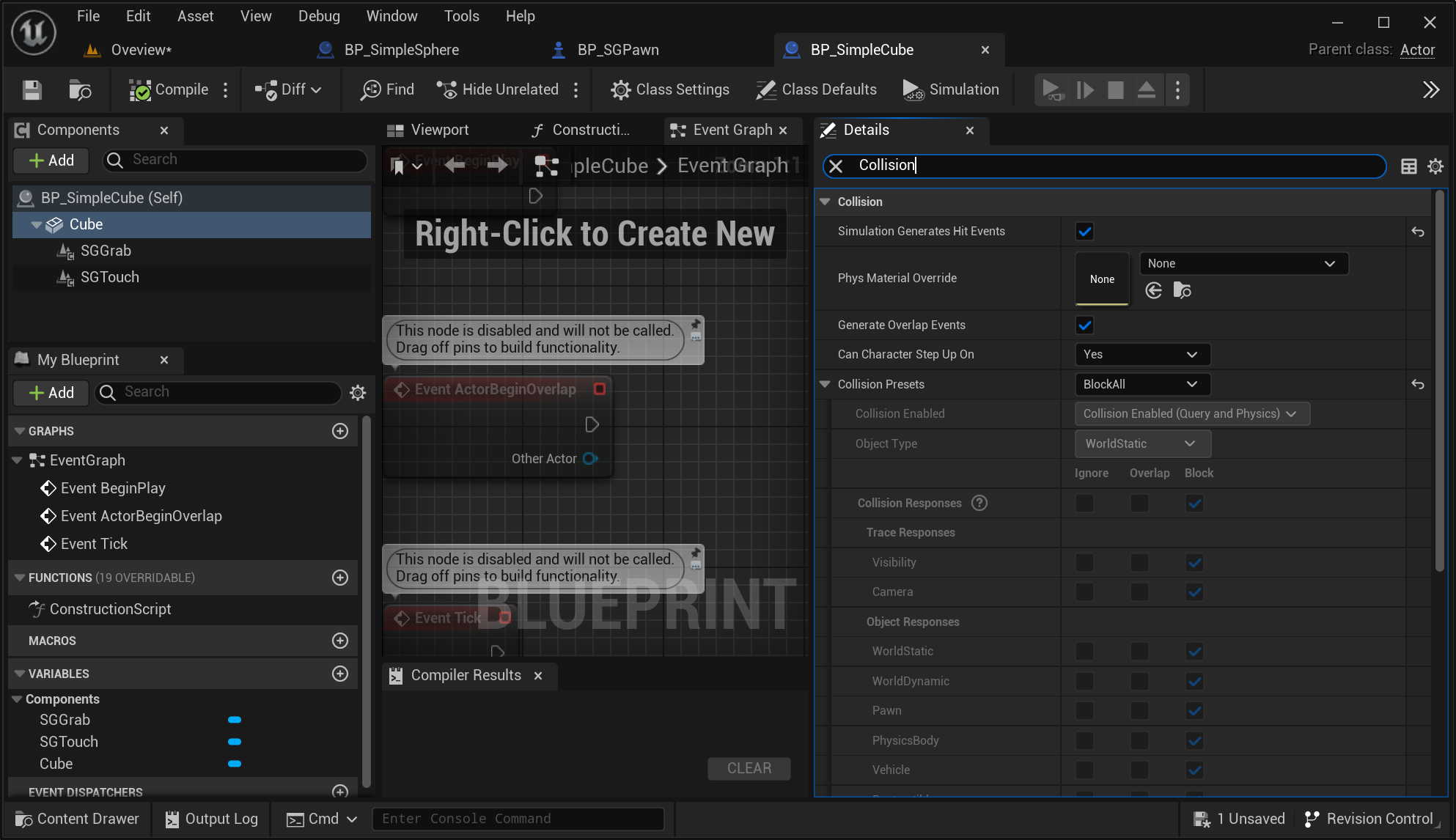
- Additionally, enabling
Simulation Generates Hit EventsandGenerate Overlap Eventson the actors mesh components is mandatory. These settings are crucial for notifying the grab system when the virtual hand meshes come into contact with the actor.
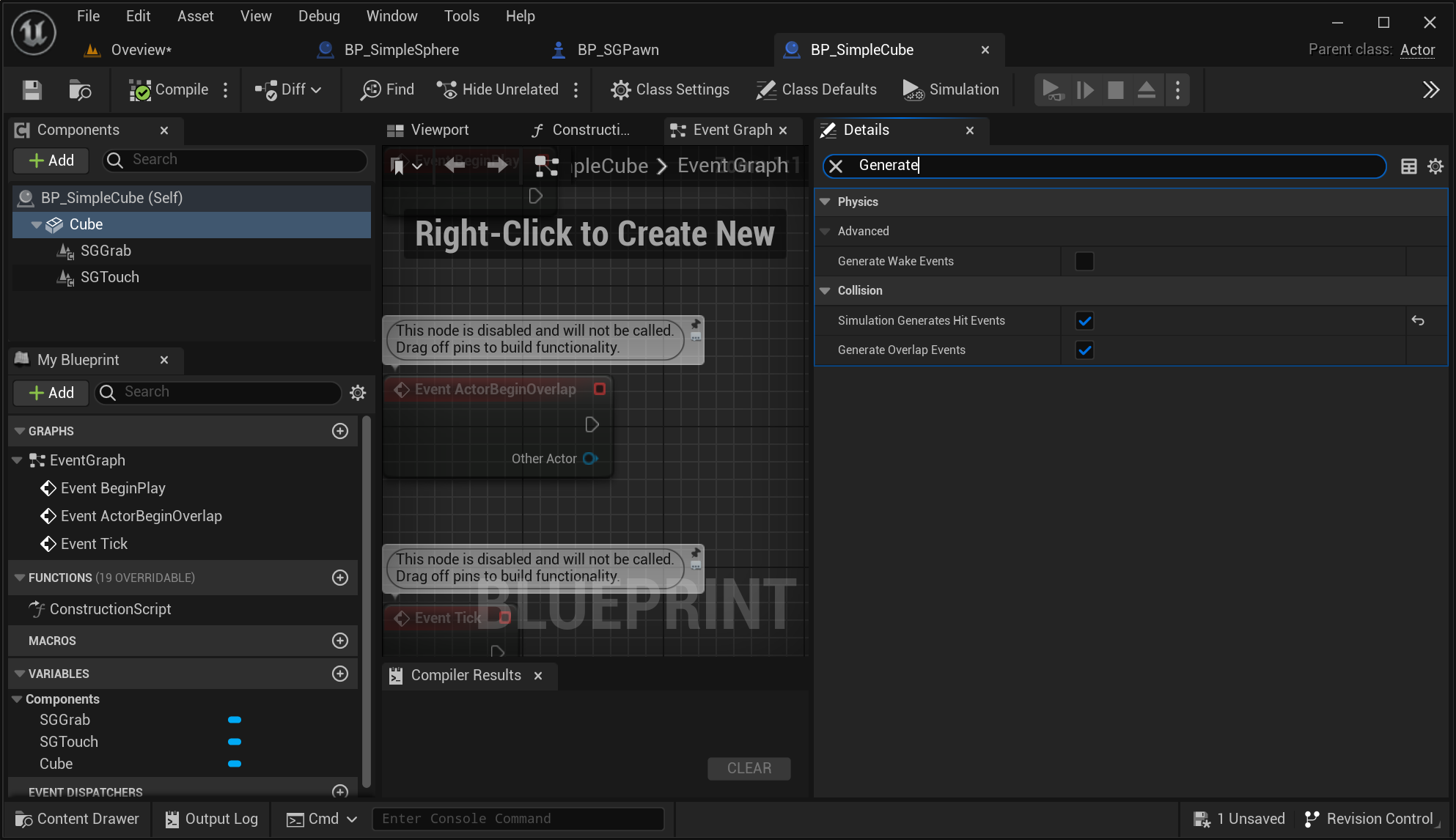
Video Tutorials
The following tutorials, though for much older releases of the plugin, still provide in-depth guidance on the same process: